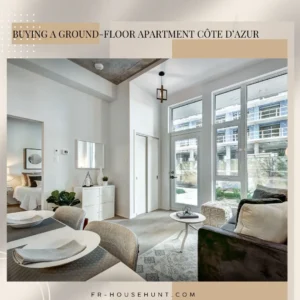
10 Cities In The French Riviera Where The Quality Of Life Is High
As we all know, the French South East is a great place to live in. Choosing to live in the Alpes Maritimes means having everything nature has to offer close at hand: lakes, rivers, sea, mountains, forests… Wherever you decide to settle in the 06, you can go skiing in the morning and sunbathe on the beach in the afternoon, all in the same day! What’s more, the border with Italy is less than 50 km from Nice, so you can treat yourself to a pleasant trip ‘abroad’ to inland villages such as Dolceacqua or Apricale, or simply go shopping at the Ventimiglia market. And last but not least, Nice Côte d’Azur International Airport, France’s second busiest airport after Paris, connects you to Europe’s major cities – what better way to get to London in around two hours or Barcelona in an hour and a half – to North Africa, the Middle East and the Americas.
So when it comes to choosing which town to move to in the Alpes Maritimes, you’re spoilt for choice!
In this article, you’ll find inspiration for choosing your town in this département nestling between the Alps and the Mediterranean Sea.
Villes & Villages où il fait bon vivre : highest quality of life in the French Riviera
Every year, the association Villes & Villages où il fait bon vivre publishes its ranking of French towns and villages where life is good. The ranking based on 34,808 towns and villages, and takes into account 187 criteria divided into eleven categories. These relate to quality of life, safety, health, transport, education, local finances and taxation, and property attractiveness.
We’re going to introduce you to 10 of the towns in the Alpes Maritimes that have been honoured in this ranking.
Nice: N°1 for quality of life in the French Riviera

The magnificent economic and administrative capital of the Alpes-Maritimes needs no introduction. This incredible blend of dynamism and tradition offers an extremely pleasant living environment for those who can’t live far from nature while still living in a large urban centre.
Situated between the sea and the mountains, the capital of the Côte d’Azur also has an eventful history, as witnessed by the narrow streets of Vieux-Nice, the hill of the Château, the mansions of Cimiez and Boulevard Victor Hugo, and the port of Lympia. Every district of this incredible city has a story to tell. Nice’s neighbourhoods are all different from one another. This city in the Alpes-Maritimes seems to be divided in two: the left bank of the Paillon, which is older, is characterised by urban planning inspired by the Nisso-Ligurian style and typically Piedmonts architectural elements. The right bank, which is more recent and more ‘French’, features Belle Époque, Art Deco and, more generally, Haussmann styles.
Proud of its traditions but open and welcoming, Nice attracts 14 million visitors a year, who come here to savour the art of living à la niçoise.
In 2024, Nice has been 13th out of 34,808 towns in France, 7th out of towns with 100,000 or more inhabitants in France and 1st in the Alpes Maritimes département. A fine score for France’s fifth-largest city!
Saint-Laurent-du-Var: shopping, culture and beach

Neighbouring Nice, separated from it by the Var river – the only river in France not to bear the name of the department in which it lies – this charming town is an atypical tourist resort that offers high quality of life. Boasting fine sandy beaches, a marina offering a plethora of water-based activities and a seafront promenade brightened up by the presence of numerous restaurants, it is also the town of choice for local SMEs and is home to the Cap 3000 shopping centre, the 5th largest in France. Saint-Laurent-du-Var is also a city of culture, with the Fête du Terroir, the Festival du Polar, the historic trails of the Vieux Village and the George Brassens theatre.
Ranked 159th out of 34,808 towns in the ranking and 6th in the Alpes-Maritimes among the « Towns where it’s good to live », it’s easy to get to by plane – you can watch planes take off and land from the beach – by bus, car or train. And also by bike, thanks to the long coastal cycle path that links it to Nice, Antibes and Cannes.
Experience our tailored Discovery Tours, designed to introduce you to the French Riviera’s unique real estate landscape. Ideal for initial explorers, these tours provide valuable insights into the local market and lifestyle.
Vence, the charm of authenticity
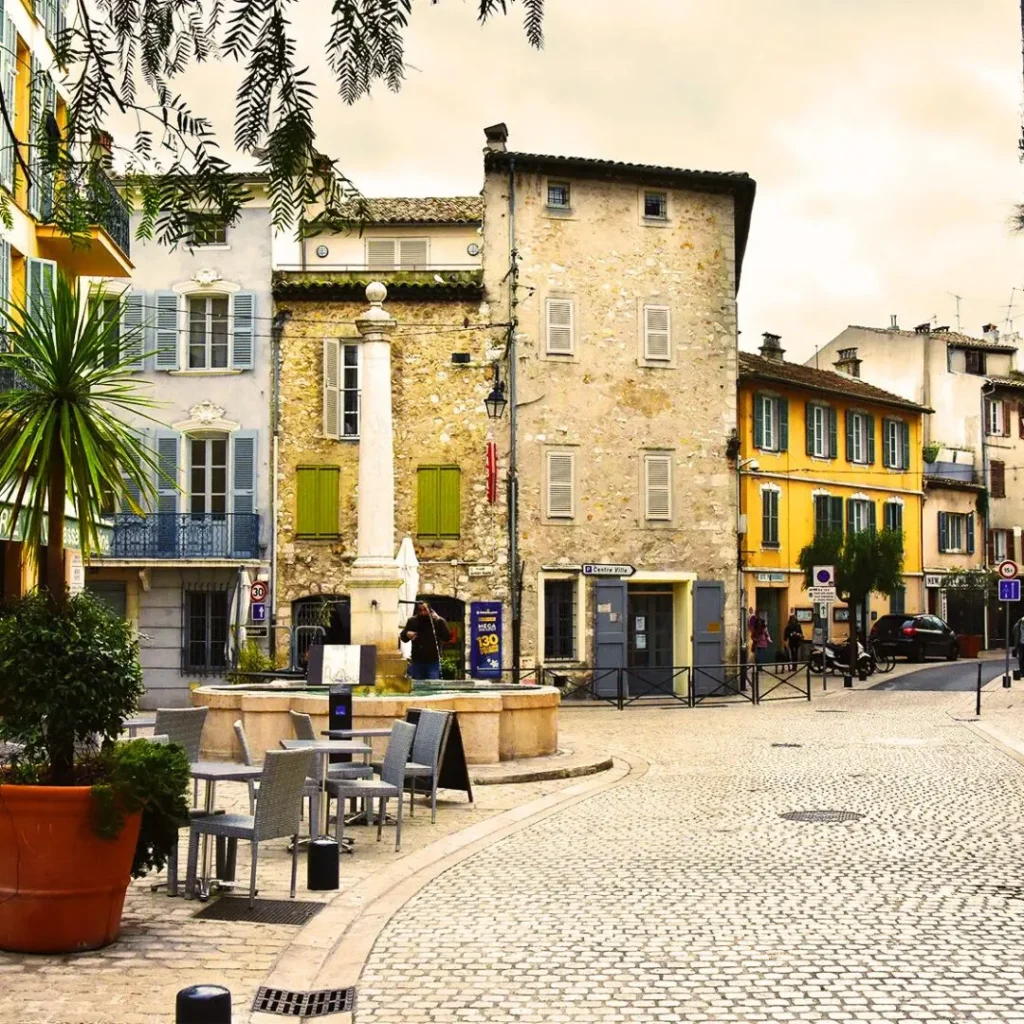
Vence is considered to be one of the most beautiful villages in the Alpes Maritimes. And rightly so! Situated around 20 kilometres from Nice, this delightful little town is a jewel in the art of living, known for its remarkable fountains, charming little streets and ramparts. Vence offers a relaxing setting, but the local cultural life is quite dynamic, particularly with the Nuits du Sud, a major music event that transforms the town into an open-air stage. Vence was one of painter Henri Matisse favourite spots, who left here one of his masterpieces, the Chapelle du Rosaire, a mystical and romantic place.
If you are looking for quality of life in the French Riviera, this city may fit your expectations. In this haven of peace and security, children walk to school and play in the town gardens.
In 2024, Vence was ranked 840th out of 34,808 and 21st among towns in the Alpes Maritime and 5th among towns with between 10,000 and 20,000 inhabitants. Well-rated overall, Vence is particularly noted for its dynamism and its range of leisure and cultural activities.
Menton, perle de France
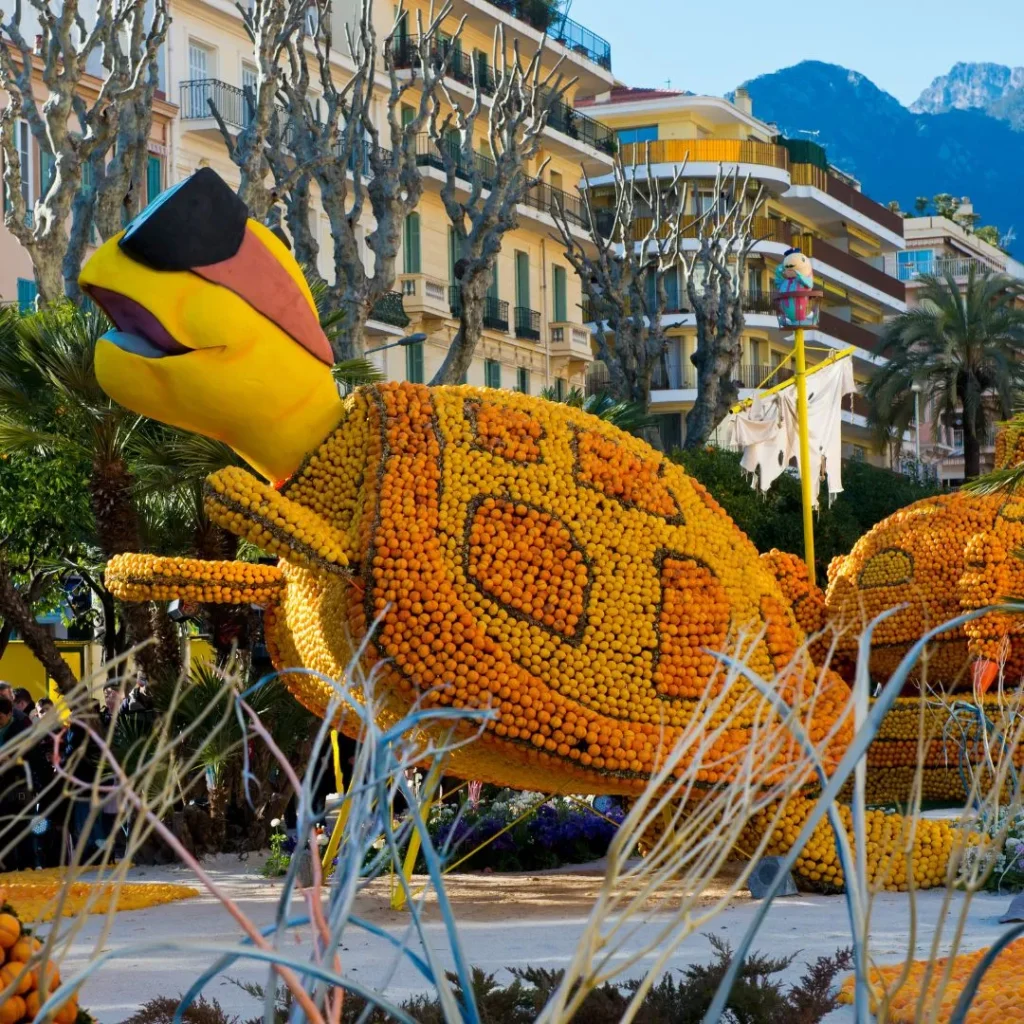
Legend has it that Eve took a golden fruit with her when she left Paradise on Earth. After crossing the mountains, valleys and plains, Adam and Eve caught sight of Garavan Bay. The gulf, the mild climate and the luxuriant vegetation reminded Eve of the sweetness of Eden, and she planted her golden fruit there. And so, around her lemon, Menton, a little paradise on earth, was born… Menton satisfied the search for quality of life in the French Riviera of Adam and Eve!
Bordering Italy, Menton is the town of gardens, Jean Cocteau and lemons. This charming commune is full of places to discover, from its emblematic palaces to its panoramic viewpoints. Chosen as a seaside resort by royalty including Empress Eugénie, King Albert I of Belgium, Alexander of Russia and Queen Victoria, it has also attracted artists such as sculptor Auguste Rodin, composers Franz Liszt and Charles Gounod, and writer Blasco Ibañez, who left his magnificent Villa Fontana Rosa here…
Every year in February, the famous Lemon Festival brings the streets of Menton to life. It’s an opportunity to discover a unique world that’s not to be missed!
Menton is ranked 437 / 34,808, 14th in the Alpes Maritime region and 7th among towns with 20,000 – 50,000 inhabitants in the département.
Mougins, nestled in a peaceful, green setting

Mougins is undoubtedly one of the pearls of the Côte d’Azur hinterland. Located just 15 minutes from Cannes, this superb medieval village stands magnificently between pine, olive and cypress trees.
Surrounded by forests (the Valmasque forest park extends over 427 hectares), Mougins offers an extremely pleasant living environment: from the top of its 260-metre-high hill, Mougins offers breathtaking views over the Bay of Cannes and the Lérins Islands, while nestling at the foot of the Pre-Alps. If you are looking for high quality of life in the French Riviera, Mougins is done for you!
This village has a very special charm, with its narrow streets full of flowers and lined with superb old village houses.
Mougins is ranked 202th in France (74th out of 20,000-50,000 inhabitants in France) and 7th in the Alpes Maritimes (3th out of 20,000-50,000 inhabitants in the département).
Cannes, authenticity behind glitters
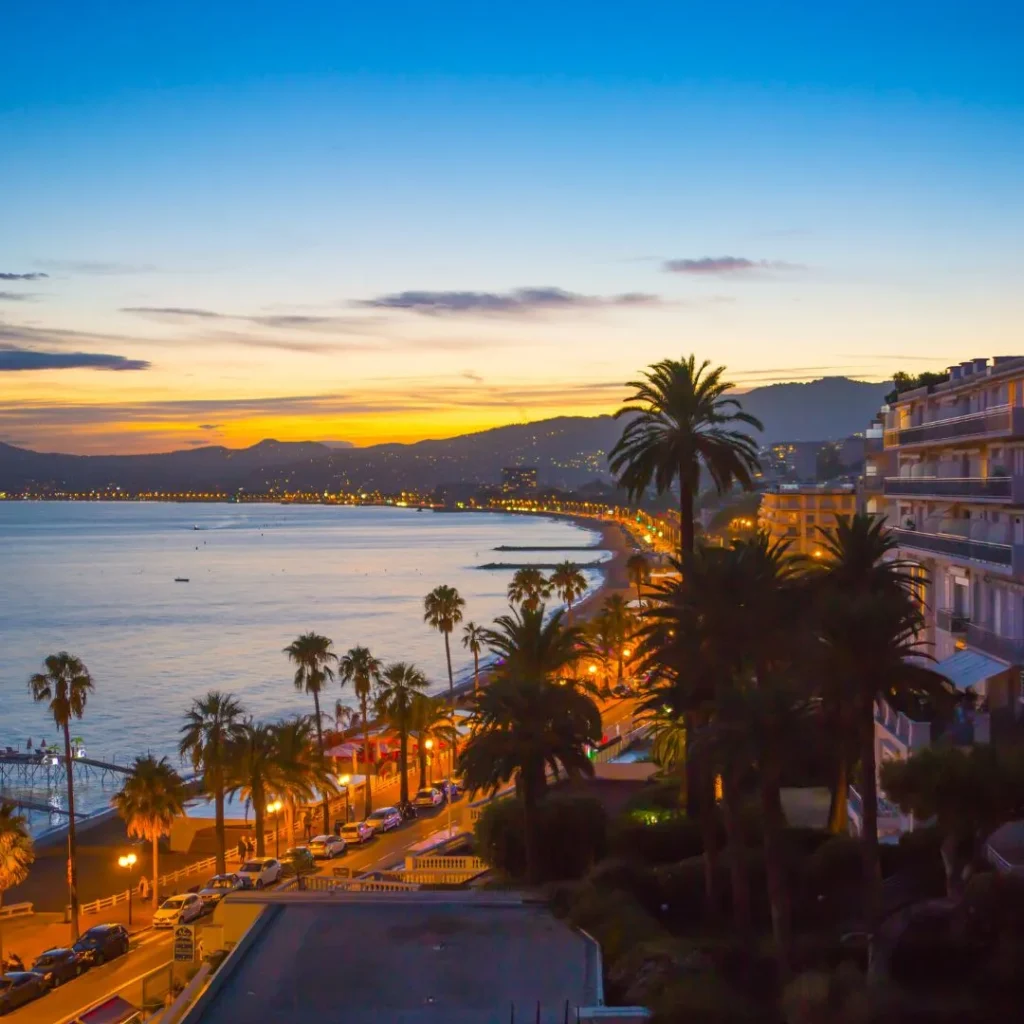
When we say Cannes, what comes to mind? This world-famous film location, the pearl of the Côte d’Azur, hides much more intimate and authentic facets. The hill of Suquet and Old Cannes, its market, the fishermen’s harbour, the Lérins Islands in the background… All this makes Cannes a pleasant town to live in all year round, even when it’s not bustling with the Film Festival and international congresses like MIPIM or MIDEM, to name but two.
Nestling on the Mediterranean coastline, Cannes enjoys an exceptional climate. Its 7 kilometres of beach are a real asset for the town. Both public and private beaches offer a wide range of activities to help you make the most of the Croisette. What’s more, Cannes also boasts picturesque districts, a natural hinterland and an extremely pleasant living environment… The city of cinema is definitely one of the cities with the highest quality of life in the French Riviera.
In 2024, the town of Cannes was ranked 40th in the list of the best towns to live in in France. Cannes is also ranked 3rd in the Alpes Maritimes département.
Antibes, quality of life in the French Riviera Picasso style
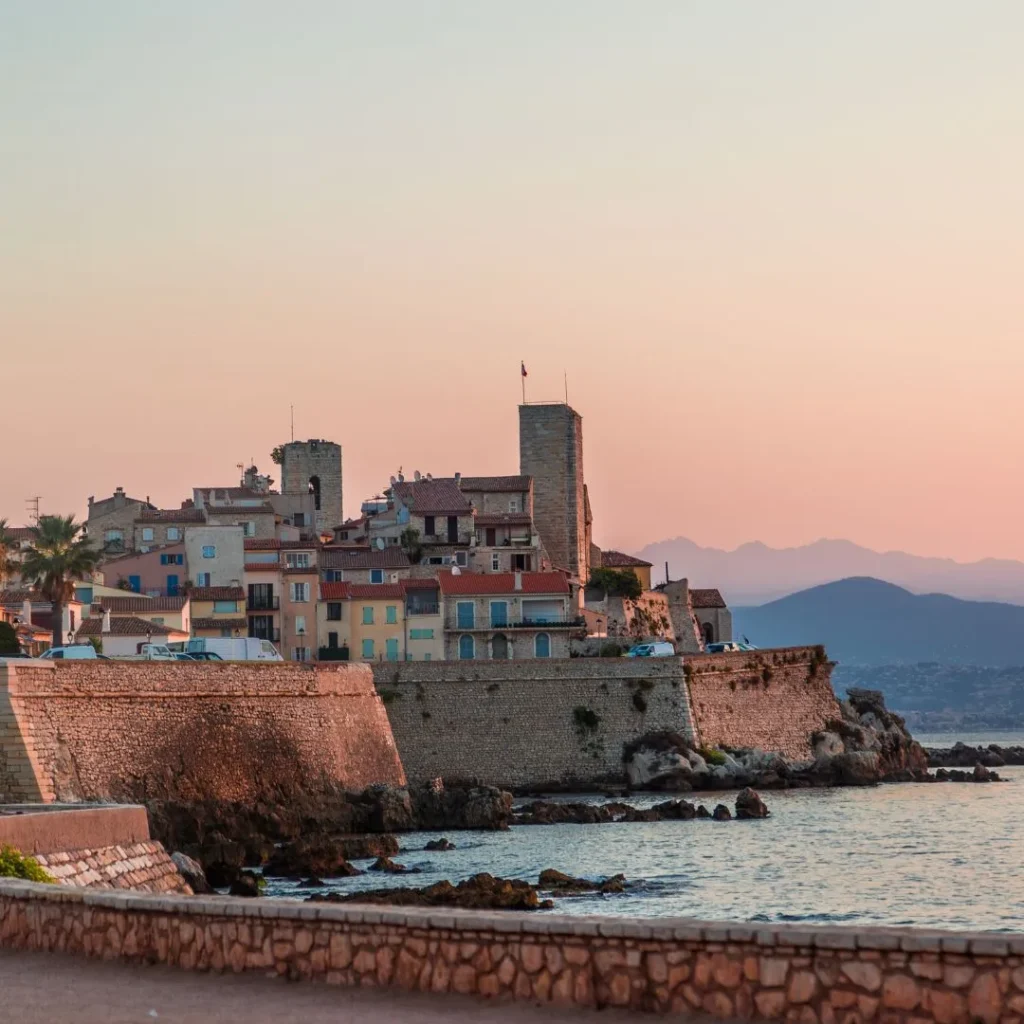
In 1946, Picasso moved to Antibes, attracted by the Château Grimaldi, which today houses the Picasso Museum. He was amazed by the light in this charming town on the Côte d’Azur… as well as being a great fan of the jazz music he listened to in Juan-les-Pins!
It’s easy to see why Picasso chose Antibes. And it’s no surprise that Antibes is one of the best places to live in the Alpes-Maritimes. The narrow streets and picturesque of Vieil-Antibes welcome visitors in a very special atmosphere. Shops, cafés and art galleries can be discovered as you stroll along. The same goes for Antibes’s Provencal market, offering a wide variety of local produce.
Antibes is also home to Fort Carré, a fortress built in the 17th century, where the Nuits Carrées Festival comes to life every June. On the bill for this huge open-air concert are emerging stars of the music scene alongside international stars.
And let’s not forget Cap d’Antibes, one of the most exclusive places in the world, where you can enjoy beautiful walks along the coastal path and dive to meet the marine life that lives here.
Antibes is ranked 25th nationally and 2nd in the department.
Mandelieu-la-Napoule, capital of mimosa
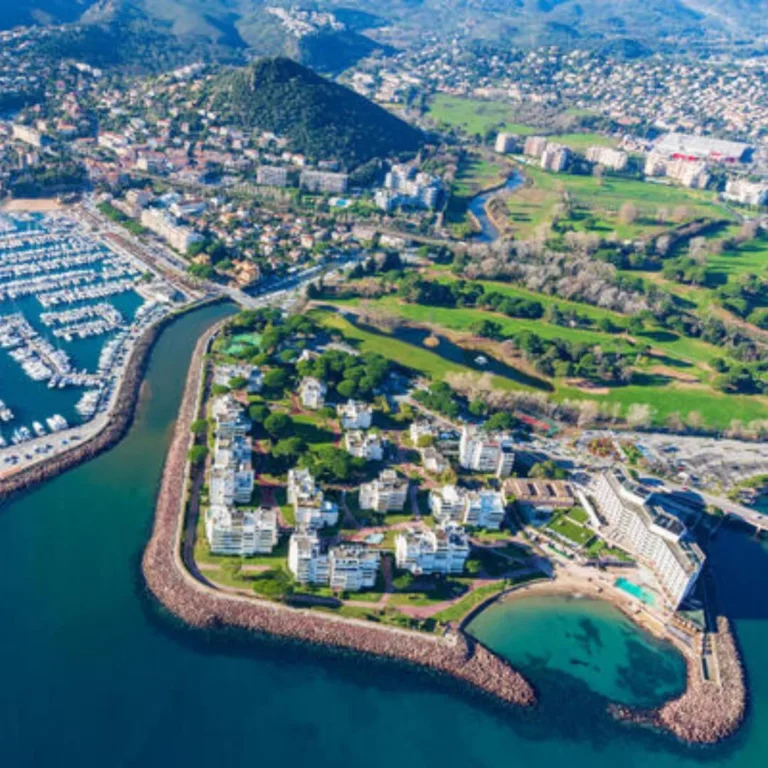
Just a few kilometres from Cannes, discover Mandelieu-La Napoule, capital of the mimosa and gateway to the Estérel. Mandelieu-La Napoule is the result of a 1970 merger between the communes of La Napoule and Mandelieu. Dominated by the Estérel and Tanneron massifs, this seaside resort in the Alpes-Maritimes is famous for its gentle way of life. And also for the mimosa, which lights up the hills of Mandelieu from January to March.
A family town on a human scale, it is one of the most popular towns in the western part of the Alpes-Maritimes. It lies at the heart of an exceptional area between the Mediterranean, the Esterel mountains and the Tanneron forest, irrigated by the many rivers that run through its neighbourhoods and bordered by the bucolic banks of the Siagne. Mandelieu-La Napoule has been benefiting from major investment over the years to enhance its natural heritage.
Mandelieu-La Napoule is one of the towns in the Provence-Alpes-Côte d’Azur region with a rich historical heritage. Its castle, the Château de la Napoule, is a remarkable testimony to this. Restored in the 1920s by the American artist Henry Clews, the Château de La Napoule occupies a prestigious seafront site that was known to the Romans over 2,000 years ago. While Henry Clews devoted himself to the architecture of the château and his artistic works, which can be seen in the château museum, his wife was the architect of the gardens. The gardens feature water features and topiary. This historic monument offers a fascinating escapade into the history of architecture.
Among the assets of this town in the west of the 06 department, it is impossible not to mention the Old Course Cannes-Mandelieu, one of the oldest golf courses in France, created in 1891 at the behest of Grand Duke Michel of Russia.
In the ranking of towns and cities with the highest quality of life in the French Riviera, it comes in 239th in the general ranking at national level, but 96th in France among towns and cities with 20,000 – 50,000 inhabitants. In 8th place in the Alpes-Maritimes department, in the PACA region.
Grasse, flowers and breathtaking scenery
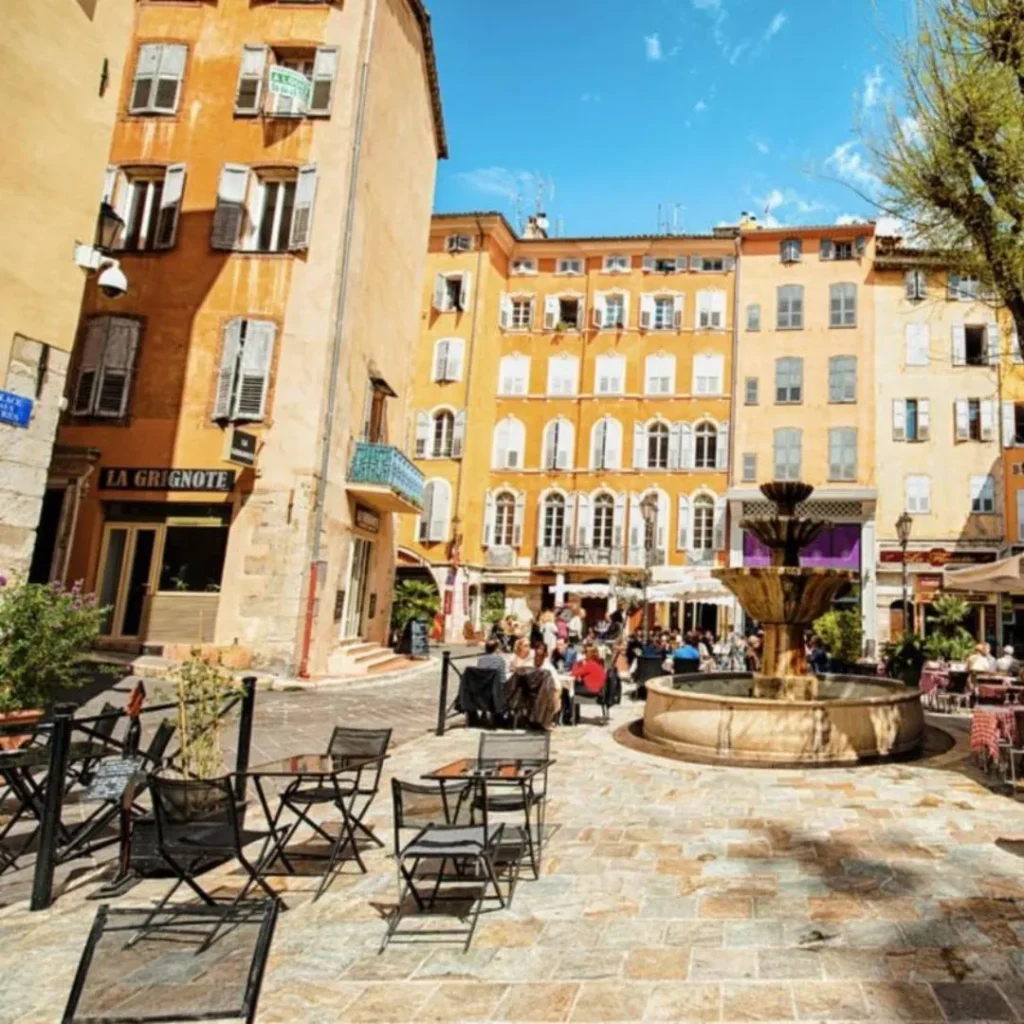
Grasse, in the Alpes-Maritimes region, is known the world over for its perfume industry. Three major perfume factories have contributed to Grasse’s development and continue to contribute to its reputation: Fragonard, Molinard and Galimard. Ideally situated between the sea and the Préalpes d’Azur, Grasse is a city of art and history, surrounded by breathtaking scenery. The gardens and fields that border Grasse, adorned with jasmine, roses, lavender and mimosa, give this beautiful inland town a particularly flowery atmosphere. Villas such as the Villa Fort France, the Villa Noailles and the Villa de la Princesse Pauline in the hills above the town bear witness to Grasse’s architectural heritage. The town is also home to such jewels as the cathedral, the 13th-century episcopal palace and 17th- and 18th-century town houses.
In spring, the city’s alleywaysare transformed into veritable gardens for the ExpoRose event. The fountains and squares are decorated with a host of roses. Every August, the town organises the Jasmine Festival. The programme includes shows, flower battles, music groups and street performers.
Grasse has the special charm of Provencal towns and villages. Its market on the Place des Aires showcases local produce such as olives, honey and cheeses.
What’s more, nature reigns supreme in the Pays de Grasse, and Grasse lies at the gateway to the Préalpes d’Azur Regional Nature Park, where you can take a number of hiking trails.
As in Mandelieu-la-Napoule, Grasse also has plenty to offer to golf enthusiasts. There are several well-known golf courses close to Grasse, including the 18-hole Grande Bastide golf course and the Claux-Amic golf course.
In short, Grasse is one of the most pleasant towns to live in the Alpes-Maritimes and that offers quality of life in the French Riviera.
It is ranked 140th among the most liveable towns in France and 5th in the département.
Mouans-Sartoux, a heaven for families
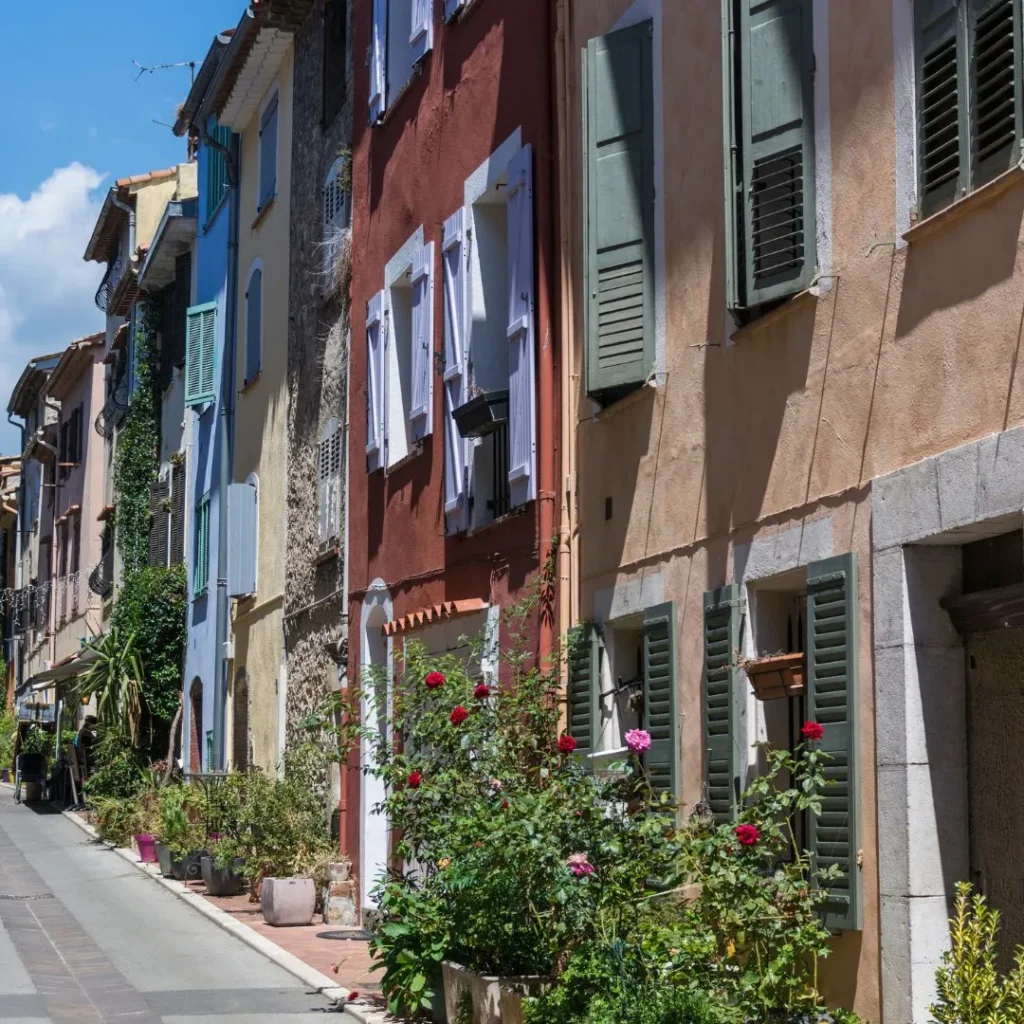
When talking about the quality of life on the French Riviera, it is impossible not to include Mouans-Sartoux. This town used to be an agricultural village (olive groves, flower crops, jasmine and roses for perfumeries), but gradually opened up to commerce and crafts. Its historic centre is adorned with fountains and wash-houses, reflecting its rural past. Its flower-filled lanes are a haven of peace, dotted with blue, yellow and pink facades.
Mouans-Sartoux is a large residential village, popular with families for its quality of life. The Mouans-Sartoux Provencal market takes place every Tuesday and Thursday morning on the Esplanade de l’École. This is where you can stock up on local produce and Provençal crafts.
Every October, the Mouans-Sartoux town council and local booksellers organise a highly enjoyable book festival, where authors and readers come together for book signings and lectures. Mouans-Sartoux is also home to a modern, dynamic media library offering a wide range of activities for young and old alike.
Mouans-Sartoux offers an exceptional quality of life, with local shops, a wide range of leisure activities, well-developed green spaces and a dynamic and friendly community.
Its position in the national ranking of towns and cities where life is good is 130th and 5th in the département.
Cagnes-sur-Mer, a little gem in the French Riviera
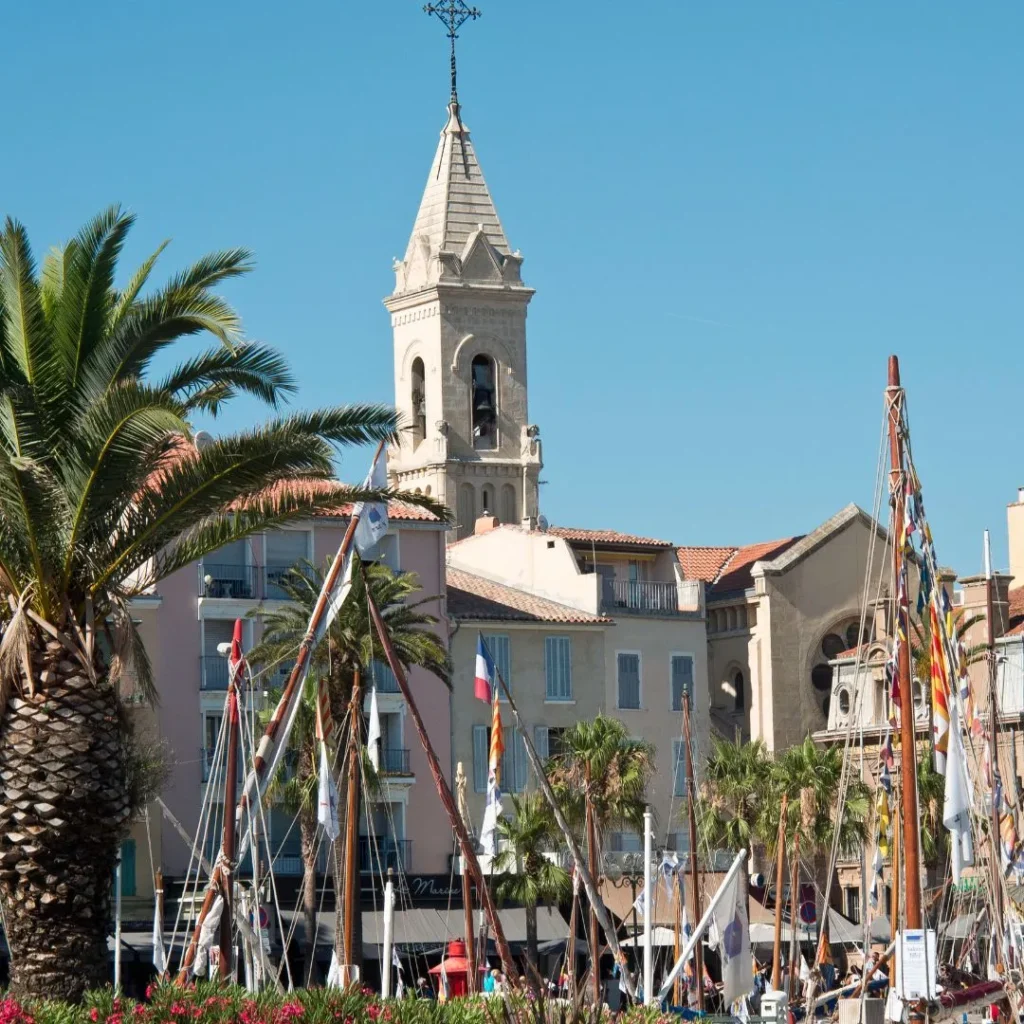
Cagnes-sur-Mer is one of the five largest towns in the Alpes-Maritimes department. A coastal town to the west of the Var valley, it is crossed by two rivers, the Cagne and the Loup, which have their source in the Grasse Pre-Alps.
The town is characterised both by its extensive green spaces, covering several hundred hectares of hillside, and by the presence of the sea, with 3.5 km of coastline along the new seafront. Cagnes-sur-Mer’s central location in the heart of the département makes it easy to get to. Cagnes-sur-Mer is a friendly, supportive and sustainable town that is committed to developing environmentally-friendly modes of transport and preserving natural resources and areas. Cagnes-sur-Mer remains imbued with the presence of the painter Renoir, who lived here in his final years.
One of the key features of Cagnes-sur-Mer is the Parc des Canebiers, which the town’s mayor describes as « the Central Parc of Cagnes« . The aim of this 30,000 m² green lung is to protect the banks of the river Cagnes and offer residents a pleasant space in the town centre. Further south, the magnificent promenade has been a popular destination for residents and tourists alike for many years.
In its early history, Cagnes was a hilltop village with fortifications built between the 12th and 13th centuries. The medieval village of Haut-de-Cagnes, with its cobbled, flower-filled streets, is still there and a must-see when you come to Cagnes. From the second half of the 16th century onwards, inhabitants settled on the site of the ramparts. Around the 19th century, the people of Cagnes, who until then had been mainly involved in agriculture, began to develop fishing. It was at this time that a fishing village was formed in Cros-de-Cagnes. The town continued to develop, and the local authorities were keen to add value to the commune.
The Côte d’Azur racecourse is also one of the largest in France and is located by the sea. It is also used for shows and concerts. Not to be forgotten is the Renoir Museum at the Domaine des Collettes, which was the painter’s last home. Attracted by the Impressionist master’s fame, many artists have stayed in Haut de Cagnes, which has been dubbed « the Montmartre of the Côte d’Azur ». The quality of life in the French Riviera with a Parisian touch!
Cagnes-sur-Mer ranks 59th nationally (24th among towns with 50,000 – 100,000 inhabitants in France) and 4th among towns in the Alpes-Maritimes.
So, which is your favourite city? Tell us in the comments!
Experience our tailored Discovery Tours!
Let us guide you through the Riviera’s charm and possibilities, setting the foundation for your property journey.
Contact us

